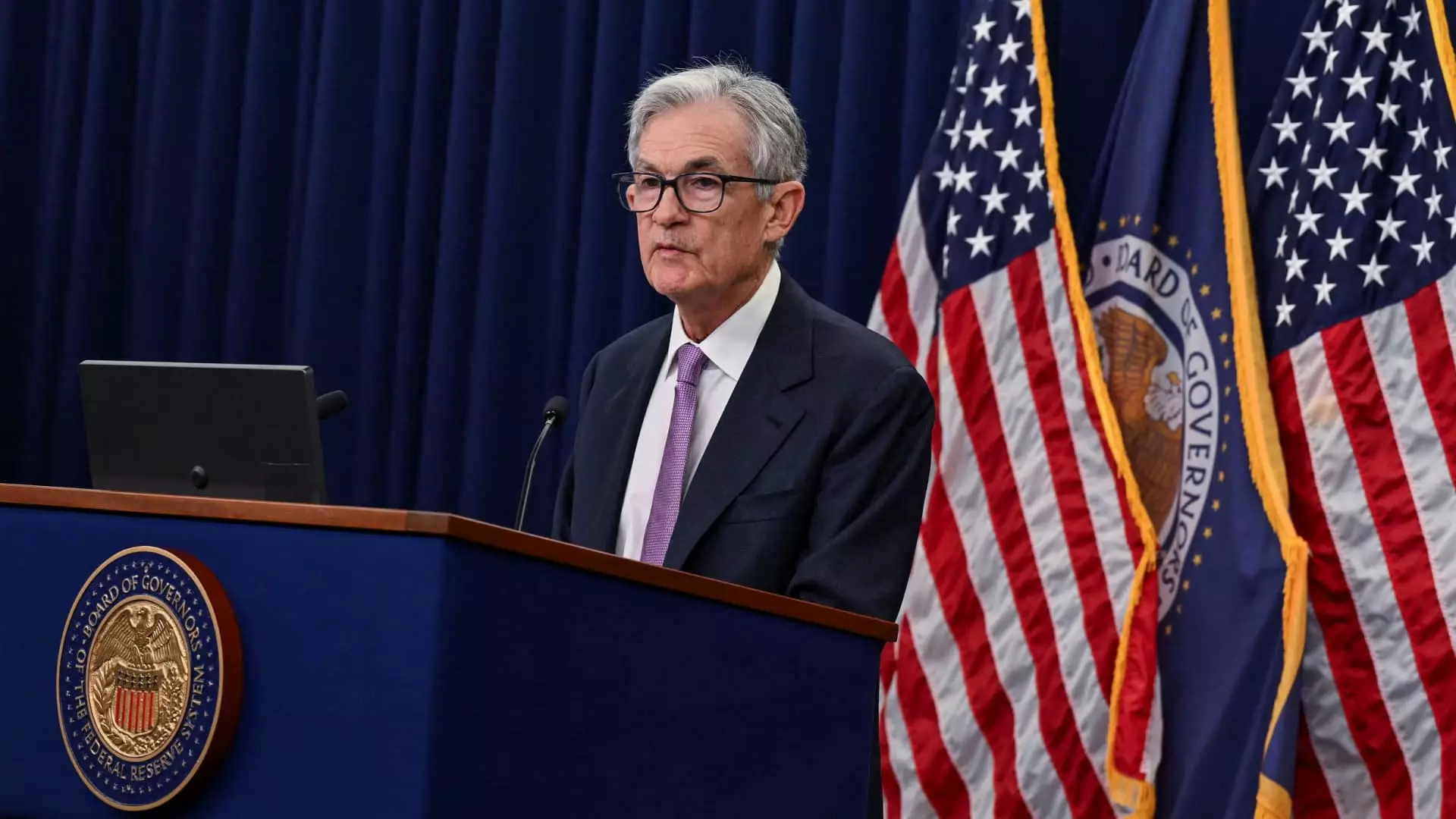The minutes released from the Federal Reserve’s November meeting reveal a nuanced picture of its current economic outlook, shedding light on inflationary trends and the health of the labor market. As inflation remains a pressing concern, Federal Reserve officials strike a cautious yet optimistic tone, suggesting a gradual approach toward potential interest rate cuts. While many economic indicators continue to fluctuate, the sentiment within the Federal Open Market Committee (FOMC) indicates a belief that the trajectory of inflation is stabilizing, positioning the Fed to consider further cuts to its benchmark interest rate.
Despite the prevailing concerns surrounding inflation, which still hovers above the Fed’s target of 2%, a consensus is forming among officials that the steady performance of the labor market offers a buffer against more aggressive monetary policy. The FOMC’s unanimous decision to lower the federal funds rate by a quarter percentage point to a range of 4.5% to 4.75% underscores a strategic commitment to fostering economic growth while monitoring inflation closely. This hesitation to engage in swift cuts reflects an acknowledgment of the complex interplay between monetary policy and broader economic dynamics.
The discussions about potential future rate cuts reflect a broader desire to adopt a more neutral policy stance as inflation sustainably trends downward. According to the minutes, FOMC participants highlighted that if economic data align with expectations—namely, inflation moving toward the 2% target and maintaining high employment—the Fed could incrementally adjust its approach to monetary policy. However, specific timelines and magnitudes for these rate cuts remain uncertain, suggesting that the committee is proceeding with caution.
Market responses to the Fed’s communications have been varied, with some traders scaling back their projections for additional rate cuts in December. The specter of political volatility, particularly the implications of President-elect Donald Trump’s proposed policies, looms large. Notably absent from the meeting minutes was any direct acknowledgment of the recent election, yet its potential impact on economic forecasts has not escaped the attention of policymakers.
The uncertainty surrounding Trump’s economic agenda, including potential tariffs and tax reforms, complicates the Fed’s decision-making process. As outlined in the minutes, many committee members expressed concerns over the unpredictable nature of these policies and their potential to exacerbate inflationary pressures. Trading markets seem to echo this sentiment, with diminishing confidence about imminent rate cuts reflected in the declining probability of reductions before the year-end.
Inflation’s continued rise is a multi-faceted issue, with various contributing factors at play. While the current rate is primarily driven by soaring shelter costs, Fed officials believe that these pressures will ease as rental price increases moderate over time. The minutes reflect a sense of guarded optimism among FOMC members, as they note that incoming data has largely remained consistent with a return of inflation to manageable levels.
Yet, some committee members remain vigilant regarding broader economic signals. The report highlights a continued emphasis on inflationary constraints, such as diminishing business pricing power and the Fed’s still-restrictive policies, which are expected to exert downward pressure on inflation. Crucially, the Fed’s commitment to reassessing its policies in light of evolving economic conditions speaks to a broader strategy of flexibility, where adjustments are made based on real-time data and analysis.
Moreover, scrutiny of the labor market plays a pivotal role in the Fed’s evaluation of economic health. Despite an underwhelming increase of 12,000 nonfarm payroll positions in October—partly influenced by natural disasters and labor strikes—officials highlighted a broader stability in employment conditions. Notably, indications of low layoff rates provide reassurance that the labor market retains its resilience. This steadfastness offers the Fed additional latitude to pursue gradual policy adjustments without shocking the economy.
As the Fed navigates this labyrinth of economic uncertainty, the challenge lies in balancing the risks of premature rate cuts against the need for sustained economic growth. The FOMC’s approach reflects a careful calibration of various economic indicators, ensuring that once a path towards a neutral monetary policy is identified, the transitions occur seamlessly.
The forthcoming months will undoubtedly present challenges for the Fed as it strives to maintain a stable economic environment while adapting to new developments and evolving data. With various forces at play, including potential changes in fiscal policies under the new administration, the Fed’s ability to anticipate and respond proactively will be paramount in charting a course that fosters both growth and stability.
In sum, the landscape ahead remains complex and uncertain. The Federal Reserve’s cautious optimism and methodical approach underscore its commitment to scrutinizing economic indicators, adapting policies judiciously, and ultimately nurturing a resilient economy amid turbulence.

